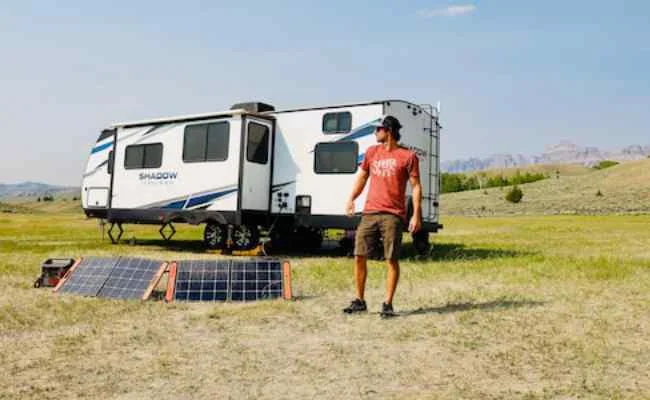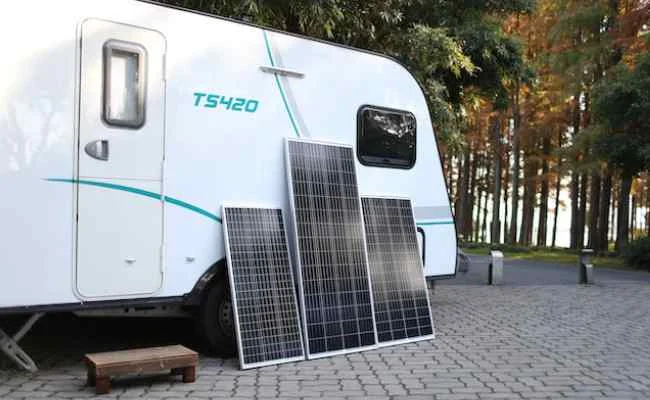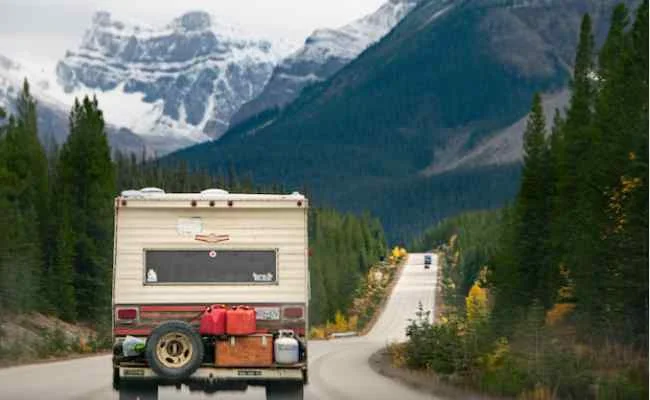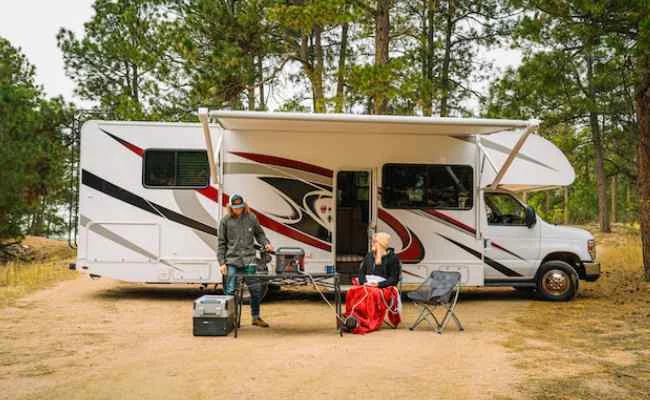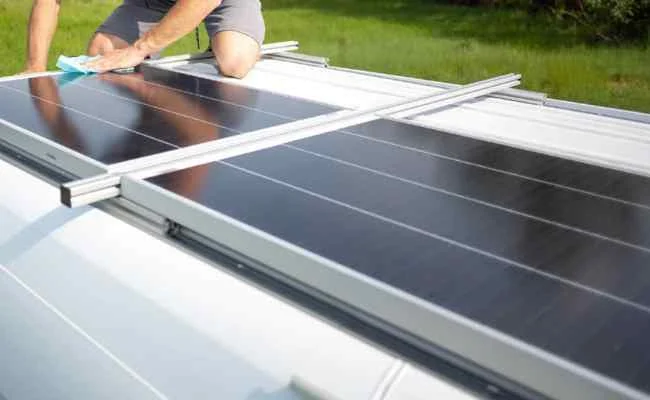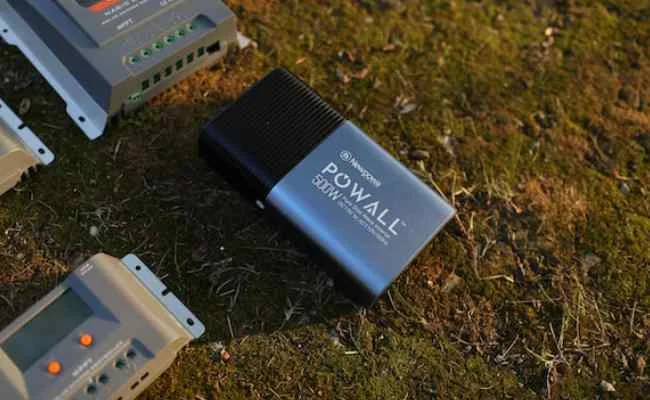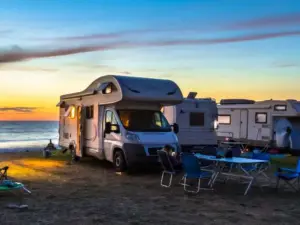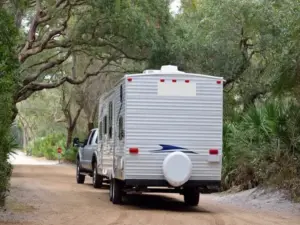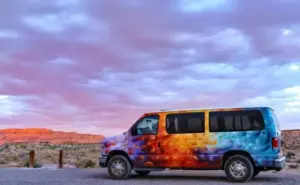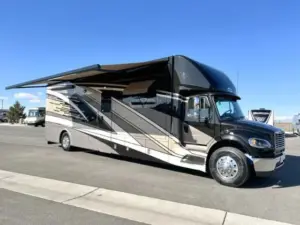Getting RV solar panels is one of the smartest and most rewarding purchases you can make to help streamline your outdoor adventures. After all, solar panels are highly touted for their environmental impact and long-term efficacy, leading to their popularity in many industries.
No matter the case, it wasn’t until later that solar systems transformed into a more accessible and cost-efficient solution for households and individuals, including outdoor enthusiasts. If you’re one of the latter who is either curious or enchanted by the thought of adding off-grid solar systems to your rig, then this post will surely help you weigh your options better!
Read here about RV dishwashers.
Read here about RV microwaves.
What Are RV Solar Panels?
A solar panel is a device that converts light from the sun into electricity. There are many types of solar panels in the market, including large-scale modules for industrial use as well as rigid or flexible solar panels for urban applications.
But that’s not all because solar panels are also manufactured in portable forms such as RV solar systems. These compact modules are commonly designed to gather enough power that can recharge small devices and appliances.
RV solar panels also make for a great energy source when camping or during emergencies, not to mention an excellent alternative to hazardous propane.
How Do RV Solar Panels Work?
The main component of a solar panel is a solar cell. More precisely, photovoltaic cells or PV cells.
Solar cells are made from different materials but are designed for a similar purpose, which is to harvest light from the sun and transform it into consumable energy. An RV solar system works pretty much the same way, except for the fact that they tend to be more compact and flexible.
Simply put, RV solar panels are consciously designed to accommodate the unique requirements of recreational vehicles.
How Many Solar Panels Do You Need for Your RV
There is no catch-all number on the amount of solar panels needed for all RVs. After all, the solar power you need will depend on what you’re trying to power up. Additionally, different RV solar panels will have varying capacity.
Generally speaking, a 100 watt solar panel is the most popular module for RV users. This setup can generate about 350 watts-hours per day (depending on location and weather conditions), which should be enough to power gadgets and small appliances.
If you need more for long trips or large groups, then you may want to consider a bigger 200-400-watt solar panel. Lastly, you should be mindful of your solar battery’s capacity. This is to ensure that you can collect enough renewable energy that can power your daily activities.
Do You Need to Use RV Specific Solar Panels?
It’s highly recommended to purchase RV-specific solar panels since these are already manufactured with the RV configuration, environment and spacing in mind.
Another important factor on why it’s best to get RV solar panels onset is that it makes for an easier installation process, especially for DIY. While it’s very much possible to mount residential solar panels to your recreational vehicle, it’s hardly practical. There’s also the possibility of incurring additional weight on your rig that can ruin your vehicle’s aerodynamics.
Do You Need Batteries for Your RV Solar Panels?
You can use a solar panel without battery storage. However, hooking up your solar panels to a battery will always be the more efficient solution since it allows you to store surplus energy. Much like portable solar panels, batteries make for a huge upfront investment but are nonetheless worth it in the long run.
How to Hook Up Solar Panels to RV Batteries?
When installing a solar system to your RV roof for the first time, you can use the steps below as your guide:
- Mount your panels on the RV roof. It’s worth noting that some vehicles are solar-panel ready, meaning a preexisting system is already installed, or an installation guide is available for reference.
- Install the PWM (Pulse Width Modulation) or MPPT (Maximum Power Point Tracking) charge controller. If you’re doing the installation for the first time, the charge controller works quite similar to how a breaker would function in electrical systems. It prevents the solar panel and batteries from overheating.
- Add a fuse or circuit breaker for your electrical system as precautionary measure.
- Install the inverter near the batteries and away from damaging elements. For safety, you are advised to refer to the installation guide that comes with the inverter.
- Connect the RV solar panels to the solar batteries to store surplus energy. The common options for batteries are lithium batteries and lead acid batteries.
As long as you have tools and references, RV solar panel installation is a great way to exercise and improve your DIY chops. It’s also a perfect opportunity to truly familiarize yourself with your rig and its electrical components. Learning these things along the way can prove beneficial when it’s time for your RV’s routine maintenance or inspection.
Are RV Solar Panels Worth It?
Installing solar panels to your RV is usually a worthwhile long-term investment despite the initial cost. Aside from consistent energy savings, solar panels provide the added benefit of traveling green. Reducing environmental impact is a prevalent topic these days, and what would be a better way to leave your mark in the conversation by taking the lead.
However, in some cases, RV solar panels might not yield the expected savings and convenience. For example, if you only travel a few times a year, then it will take longer to break even and see your investment truly pay off. There’s also less incentive for RVers who typically stay at campgrounds where you will be paying for electrical hookups anyway.
With that said, it’s best to consider your lifestyle and travel preferences before you commit to purchasing solar panels. But if you’re more into boondocking (dispersed camping) or staying in areas where electricity isn’t readily accessible, then solar panels are definitely worth checking out!
RV Solar Panel Systems: Which Solar Power Is Right For Me?
If you frequently take your recreation vehicle off-grid, then one of the best installations you can add to your rig is solar panels. If that sounds interesting, then the next step would be identifying whether you’ll be suitable for a portable or permanent kit.
The Portable RV Solar Panel System
Portable or flexible panels are the talk of the town for good reason. They’re easy to set up and you can bring them anywhere as advertised. You can even flex or fold them with ease. It also makes for the ideal purchase if you want to adopt solar power but are somewhat hesitant to drill holes in the RV roof. The only trade-off is that portable RV solar panels tend to be more expensive and less durable.
The Permanent RV Solar Panel System
Permanent or rigid panels are kits that you’d often see mounted on top of RV roofs. They can be inexpensive compared to portable modules, though they tend to take valuable space which is typically reserved for additional luggage. Therefore, installing them is never an easy commitment to make for RV owners.
What Else Do I Need For My RV Solar Panels?
Solar panels are commonly sold within a standard DIY kit that also includes a charge controller, battery bank and mounting hardware. The components in a starter pack may vary, and an item like a solar battery might not be available without additional cost. Aside from batteries, you may need to purchase an inverter separately or as an add-on.
- Battery Bank – while a solar panel system will do just fine without any battery storage, it definitely makes more sense to have one, especially if you often go off-grid. Battery bank allows you to harness excess renewable energy, which in turn can be used when solar energy generation is low. It can be a lifesaver in more than one or two occasions when you’re out in the wild.
- Inverter – inverters may be included in the starter kit or as an add-on but is nevertheless essential to set up your solar panels. The gist is that you need a solar inverter in order to use electricity from your solar panels.
- Charge Controller – the charge controller is another necessary component whose main function is to regulate the amperage or voltage so that overheating can be avoided.
Consider Solar Panels for Your Travel Trailer
In many ways, a DIY installation of a solar system is one of the most entertaining projects that you can do with your recreational vehicle. Granted you have the right tools and all the necessary components for the job. If it still sounds like a daunting task, then feel free to save this page and use it as a guide or checklist! You can even find more tips across the blog on how you can make your outdoor adventures as an RVer more successful and rewarding over time.
Read here to learn about toy hauler motorhomes.
Read here to learn about small motorhomes.

